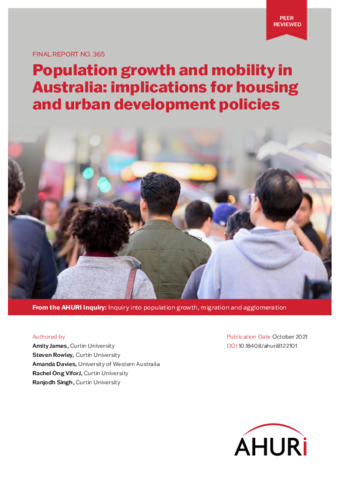From the AHURI Inquiry: Inquiry into population, migration and agglomeration
This research tracks Australia’s population growth over the period 2006–16 to examine how actual growth differed from projected growth.
It also examined key drivers of population mobility in Australia to inform future urban development policy responses to demands on infrastructure and housing.
The study finds that macro-scale population projections over the long term largely align with overall population changes. The bulk of Australia’s population growth has been concentrated in major cities, where projections were exceeded on the outer edges and inner city areas. Regional Australia has shared overall population growth, with only a few areas recording absolute population decline.
The research also examines the drivers of population mobility finding nearly 40 per cent of moves within urban areas are driven by the desire to get one’s own place or move into a larger place and only 8 per cent downsizing into a smaller dwelling. Urban to regional moves are driven more by lifestyle considerations such as starting a new job or needing to be closer to a place of study.


